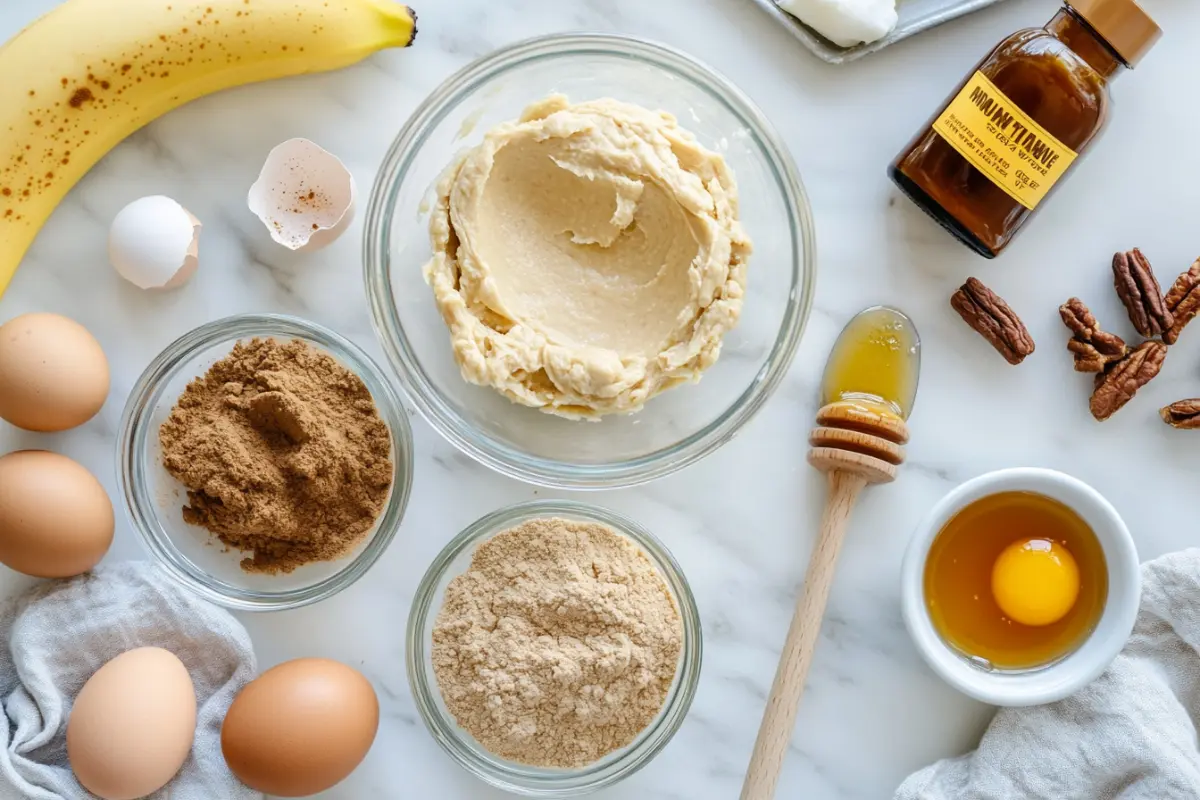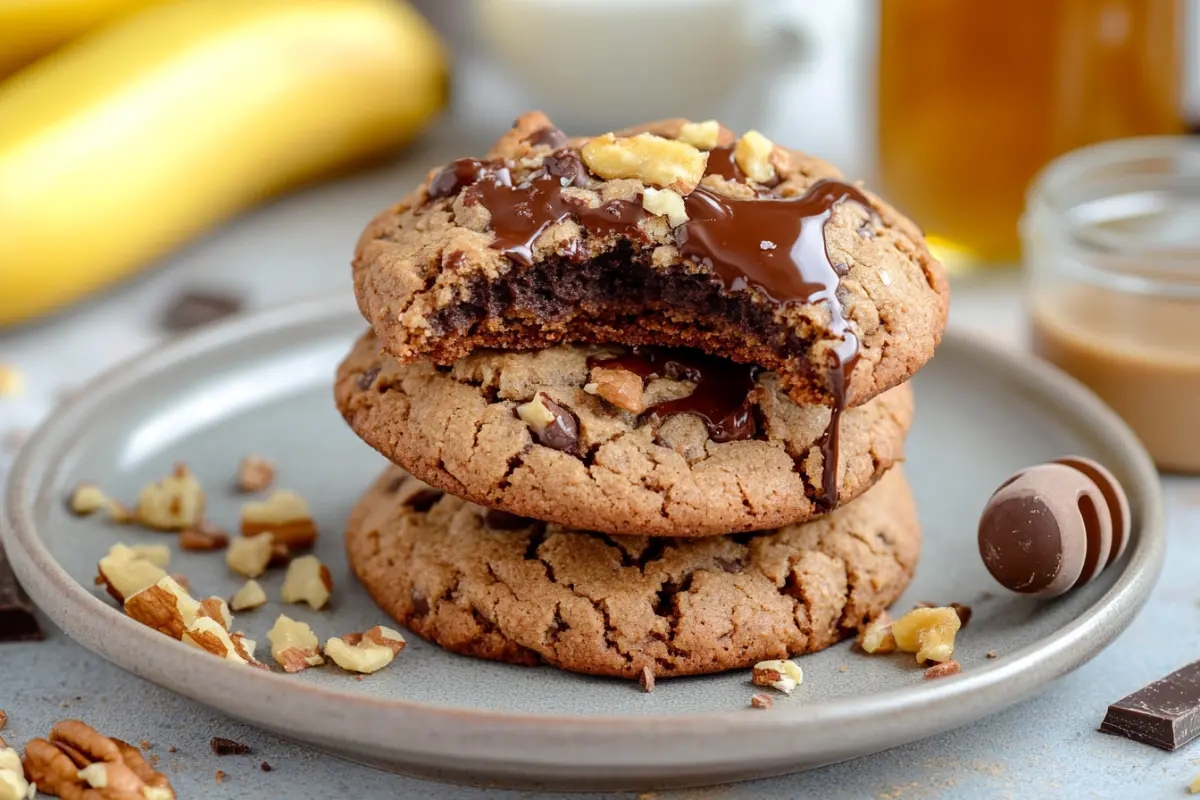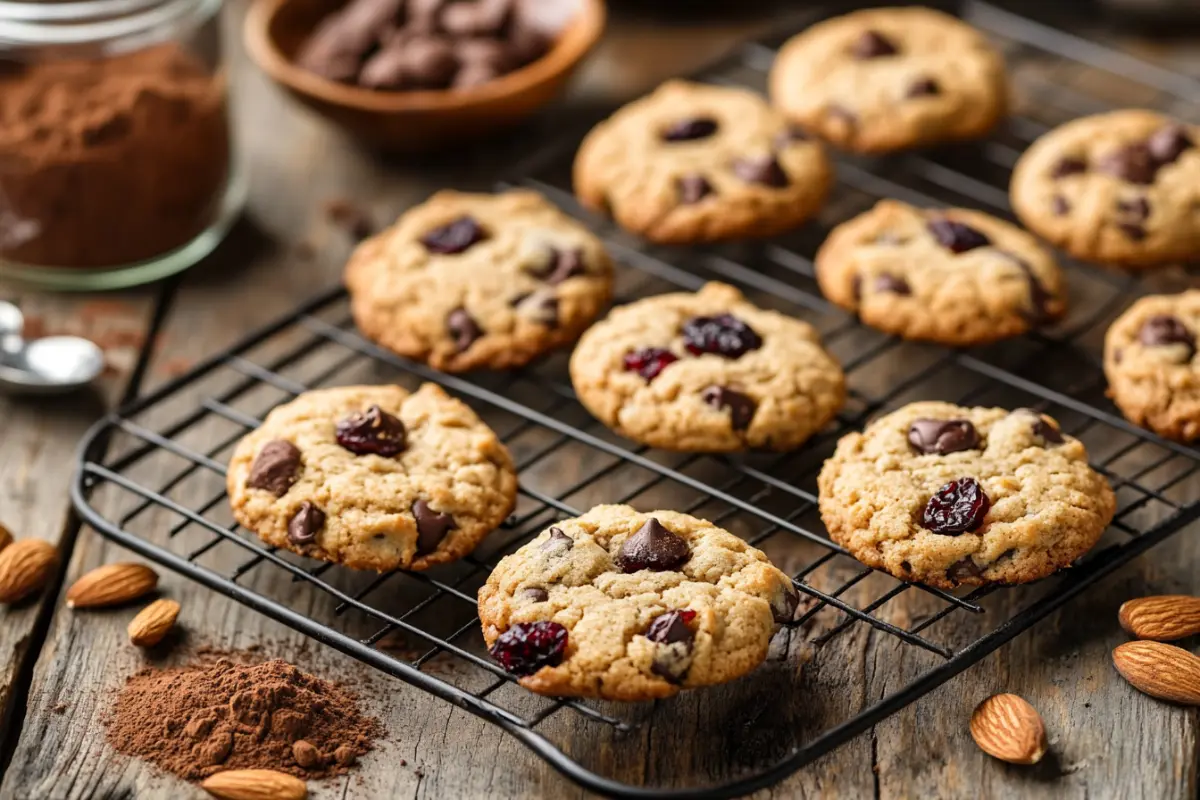Introduction to Homemade Protein Cookies
What are Protein Cookies?
Protein cookies are more than just a tasty treat; they are a nutritious snack that packs a powerful punch of protein into each bite. Unlike traditional cookies, which are often high in sugar and low in nutritional value, these cookies offer a healthier alternative that supports muscle growth, recovery, and overall well-being. These cookies are especially popular among fitness enthusiasts and health-conscious individuals who seek to incorporate more protein into their diets without sacrificing flavor.
Why Make Protein Cookies at Home?
Making these cookies at home allows you to have full control over the ingredients, ensuring that they meet your dietary needs and preferences. Whether you’re looking to avoid artificial sweeteners, add extra fiber, or customize the flavor to your liking, homemade protein cookies are a cost-effective and versatile option compared to store-bought varieties.
Key Ingredients in Protein-Packed Cookies
Choosing the Right Protein Powder
Types: Whey, Casein, Plant-based
Protein powder is the star ingredient, providing the protein content that sets these cookies apart from traditional ones.
Considerations: Choose a protein powder that aligns with your dietary preferences. For instance, whey protein is popular for its complete amino acid profile, while plant-based options like pea or soy protein are suitable for vegans.
Essential Binding Agents
Common options: Eggs, Flax eggs, Bananas
Binding agents hold the cookie dough together, ensuring the right consistency. Eggs are a traditional choice, but flax eggs (ground flaxseed mixed with water) offer a vegan alternative. Bananas not only bind the ingredients but also add natural sweetness.
Natural and Artificial Sweeteners
Natural vs. Artificial: Honey, Maple syrup, Stevia
Sweeteners balance the flavor, making the cookies enjoyable without loading them with sugar. Natural options like honey and maple syrup are preferred for their rich flavor and lower glycemic index, while stevia offers a calorie-free alternative.
Healthy Fats for Protein Cookies
Role of Nut Butters: Peanut butter, Almond butter
Fats are essential for creating a rich, satisfying texture. Nut butters like peanut or almond butter contribute both flavor and healthy fats, making the cookies more filling and nutrient-dense.
Enhancing Flavor Naturally
Vanilla extract, Cocoa powder, Cinnamon
Flavor enhancers are what make your protein cookies irresistible. Vanilla extract adds a classic, comforting aroma, while cocoa powder can turn your cookies into a chocolatey delight. Cinnamon not only boosts flavor but also offers antioxidant benefits.
Step-by-Step Guide to Making Protein Cookies

Step 1: Gather and Prepare Ingredients
Begin by gathering all the ingredients you’ll need. Measure out the protein powder, binding agents, sweeteners, fats, and flavor enhancers. Having everything ready will make the process smoother and more efficient.
Step 2: Mix the Cookie Dough
Start by combining the dry ingredients, such as protein powder, cocoa powder, and any spices, in a large bowl. In a separate bowl, mix the wet ingredients, including the binding agents, sweeteners, and nut butter. Gradually add the wet ingredients to the dry mixture, stirring until a dough forms. Tip: For the best consistency, mix until the dough is just combined; overmixing can lead to tough cookies.
Step 3: Shape Your Cookies
Once your dough is ready, it’s time to shape the cookies. Use a cookie scoop or your hands to form small, evenly-sized balls of dough. Place them on a baking sheet lined with parchment paper, then press them down slightly to create a cookie shape. If you prefer no-bake cookies, this is where you’ll shape them before setting them in the fridge.
Step 4: Bake or No-Bake Options
For baked cookies, preheat your oven to 350°F (175°C). Bake the cookies for 10-12 minutes, or until they are lightly golden around the edges. If you’re making no-bake cookies, place them in the fridge for at least 30 minutes to set.
Step 5: Cool and Store
Allow the cookies to cool on the baking sheet for a few minutes before transferring them to a wire rack to cool completely. Once cooled, store your protein cookies in an airtight container at room temperature for up to a week, or freeze them for longer storage.
Exploring Variations of Protein Cookies
Flavorful Add-ins for Protein Cookies
Experiment with different flavors and add-ins to keep your cookies exciting. Some popular options include:
- Chocolate chips for a classic touch.
- Nuts like walnuts or almonds for added crunch.
- Dried fruits such as cranberries or raisins for a burst of sweetness.
Dietary Adjustments for Protein Cookies
Whether you’re following a specific diet or have dietary restrictions, these cookies can be easily adapted:
- Gluten-free: Use gluten-free oats or almond flour.
- Vegan: Opt for flax eggs and plant-based protein powder.
- Keto-friendly: Choose low-carb sweeteners like erythritol and almond butter as the fat source.
For more protein cookie ideas, visit our dedicated page: Cookies.
Achieving Desired Texture in Protein Cookies
The texture of your protein cookies can be tailored to your preference:
- Soft cookies: Add a bit more liquid or reduce the baking time.
- Crispy cookies: Flatten the cookies more before baking and increase the baking time slightly.
Nutritional Benefits of Protein Cookies

High Protein for Muscle Building
Protein is essential for muscle building and repair. Each cookie typically contains a significant amount of protein, making it an ideal post-workout snack or a way to meet your daily protein intake.
Low Sugar and Healthy Fats in Protein Cookies
Unlike traditional cookies, these are often lower in sugar and made with healthy fats from nut butters or coconut oil. This combination helps to keep you full longer and supports heart health.
Fiber-Rich Protein Cookies for Digestive Health
Many protein cookie recipes include fiber-rich ingredients like oats, chia seeds, or flaxseeds. Fiber is crucial for digestive health, helping to keep you regular and supporting overall gut health.
Considerations When Making Protein Cookies
Watch the Calorie Content
Some recipes can be calorie-dense, especially those made with higher amounts of fats or sweeteners. It’s essential to enjoy them in moderation, especially if you’re watching your calorie intake.
Digestive Sensitivities
Certain protein powders or high-fiber ingredients can cause digestive discomfort in some individuals. If you’re sensitive to these ingredients, consider experimenting with different types of protein powders or adjusting the fiber content.
Flavor Adjustment Tips
The taste of protein powder can be an acquired taste, and not everyone enjoys it. Adjusting the sweeteners and flavor enhancers can help to mask the protein taste, making the cookies more palatable.
FAQs About Protein Cookies
Are Protein Cookies a Healthy Snack?
Yes, protein cookies can be a healthy snack when made with quality ingredients. They offer a balanced combination of protein, fats, and fiber, making them more nutritious than traditional cookies.
What Protein Powder Works Best for Cookies?
While most protein powders can be used in cookie recipes, the type of protein powder you choose will affect the texture and flavor of the cookies. Whey protein tends to produce a softer texture, while plant-based proteins can result in a denser cookie.
Substituting Ingredients in Protein Cookies
If you have a nut allergy or prefer a different flavor, you can substitute peanut butter with almond butter, sunflower seed butter, or even tahini. Each option will give your cookies a unique taste and texture.
Storing Protein Cookies for Freshness
Protein cookies can be stored at room temperature in an airtight container for up to a week. For longer storage, place them in the freezer, where they can last for several months.
Making Protein Cookies Vegan or Gluten-Free
Absolutely! These cookies are highly adaptable. Use flax eggs and plant-based protein powder for vegan cookies, and choose gluten-free oats or almond flour to make them gluten-free.
Conclusion and Final Tips for Protein Cookies
Making protein cookies at home is a fun and rewarding way to enjoy a healthy snack that aligns with your dietary goals. With the right ingredients and techniques, you can create a variety of delicious cookies that are not only packed with protein but also customizable to your taste preferences.
Remember to experiment with different flavors, textures, and add-ins to keep your protein cookies exciting. Whether you’re following a specific diet or simply looking for a nutritious treat, homemade protein cookies are a versatile option that can be enjoyed by everyone.
Finally, don’t forget to check out more dessert recipes on our website: Explore more recipes.


3 thoughts on “How to Make Protein Cookies: A Comprehensive Guide”